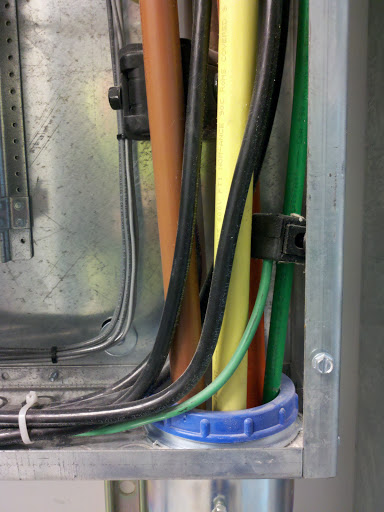cohosilver
Member
How are equipment grounding conductors sized using the unlimted tap rule if 240.21(B)(5)?
I read in 240.21 that "Overcurrent protection shall be provided in each ungrounded circuit conductor and shall be located at the point where the conductors receive their supply except as specificed in 240.42(A) through (H)."
Since the conductors will terminate at a single circuit breaker or set of fuses, is the equipment grounding conductor that is run with the taps allowed to be sized by T250.122 based on the overcurrent device where the feeds terminate?
Is there something specific that states this? Or is it just how it is interpreted?
I read in 240.21 that "Overcurrent protection shall be provided in each ungrounded circuit conductor and shall be located at the point where the conductors receive their supply except as specificed in 240.42(A) through (H)."
Since the conductors will terminate at a single circuit breaker or set of fuses, is the equipment grounding conductor that is run with the taps allowed to be sized by T250.122 based on the overcurrent device where the feeds terminate?
Is there something specific that states this? Or is it just how it is interpreted?



